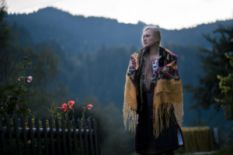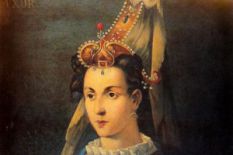History of Galicia – Volhynia Kingdom
Galicia – Volhynia Kingdom - Rurik dynasty’s principality - was created as a result of the unification of the Volhynia and Galicia principalities by Roman Mstislavich and existed from 1199 to 1392.
The principality pursued an active foreign policy in Eastern and Central Europe. The Kingdom of Poland, the Kingdom of Hungary and the Polovtsy were its main neighbors and competitors, as well as the Golden Horde and the Grand Duchy of Lithuania starting from the middle of the 13th century. To protect its territories, the Galicia – Volhynia kingdom repeatedly signed agreements with the Catholic Rome, the Holy Roman Empire and the Teutonic Order. At the same time, political, economic and cultural ties with other Russian lands weakened.
Galicia – Volhynia kingdom of Kievan Rus’ fell into decay under the influence of a number of factors. After the simultaneous death of the princes Lev and Andrei Yuryevich (1323), the lands of the principality began to be seized by its neighbors - the Kingdom of Poland and the Grand Duchy of Lithuania.
Culture of Galicia – Volhynia Kingdom
A distinctive culture was formed on the territory of the Galicia – Volhynia kingdom, which not only inherited the traditions of Kievan Rus’, but also absorbed many innovations from neighboring European countries.
The large cities and Orthodox monasteries were the main cultural centers of the kingdom, which simultaneously played the role of the main educational centers of the country. Volhynia took the leading role in the cultural life of the country. The city of Vladimir itself, the main city of Volhynia principality, was an ancient citadel of Rurikovich dynasty.
Little is known about the architecture of the principality. Written sources describe mainly the churches. The visual arts of the principality were strongly influenced by the Byzantine. Galicia – Volhynia icons were especially valued in Western Europe, many of them ended up in Polish temples when the kingdom was the conquered.
Galicians were much more superstitious than today. Often, their love for various signs and rituals turned out to be very strong, which became a part of the folklore and cultural heritage of Galicia.
The culture of Galicia – Volhynia kingdom developed in inseparable connection with real life, with the socio-economic and political history of the region. In terms of the cultural development of Galicia – Volhynia kingdom over the century after the Mongol-Tatar invasion did not lag behind its neighbors, and in some cases even became the birthplace of creative impulses that enriched the treasury of Eastern European culture of that time. Galician culture proved its viability. Galicia – Volhynia kingdom belongs to the place of honor in the formation of the Old Slavic, and later the Ukrainian culture.
Photos: depositphotos.com, google
Source: wikipedia









